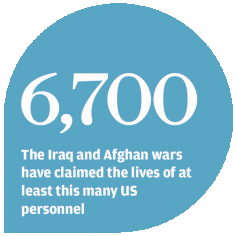Wrong place, wrong time: US general's killing shows growing Afghan peril
US general killed by gunman in Afghan uniform most senior officer to die in combat since Vietnam

Major General Harold Greene's first deployment to a war zone was his last.
The 34-year military veteran has become the highest-ranked American officer killed in combat in the post-9/11 wars in Iraq and Afghanistan, and the highest-ranked officer killed in combat since 1970 during the Vietnam war.

Greene, 55, was on his first combat tour in Afghanistan, where he was serving as the deputy commander for training Afghan troops, an appointment that was announced in January by the Pentagon.
"Our thoughts and prayers are with Major General Harold J. Greene's family, and the families of our soldiers who were injured today in the tragic events that took place in Afghanistan," US Army Chief of Staff General Ray Odierno said in a statement.

Greene leaves behind his wife, retired colonel Sue Myers, who was a study director and a professor at the US Army War College, and two adult children - a son, Matthew, who is a lieutenant and a graduate of West Point, and a daughter, Amelia.